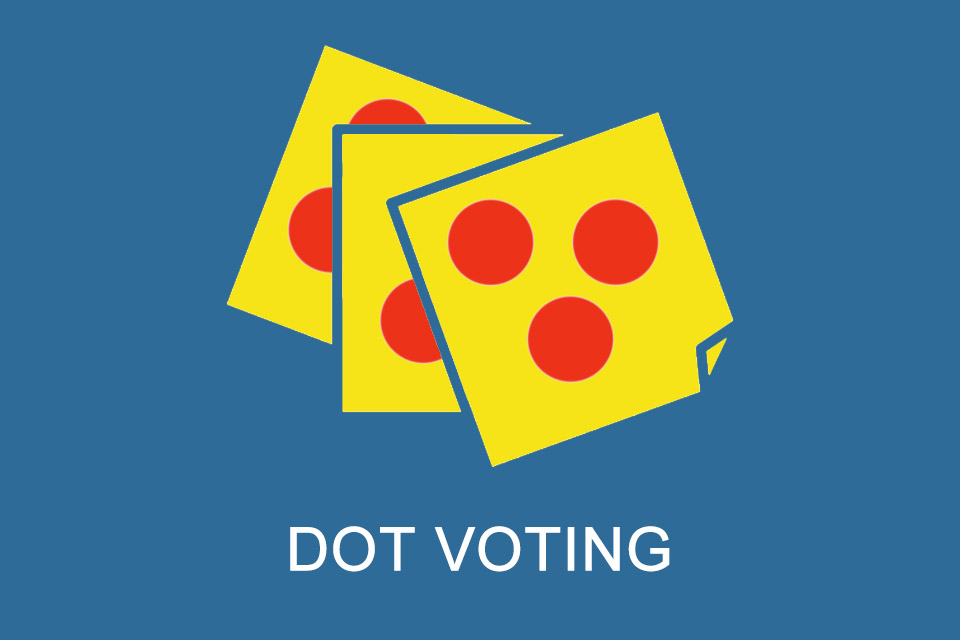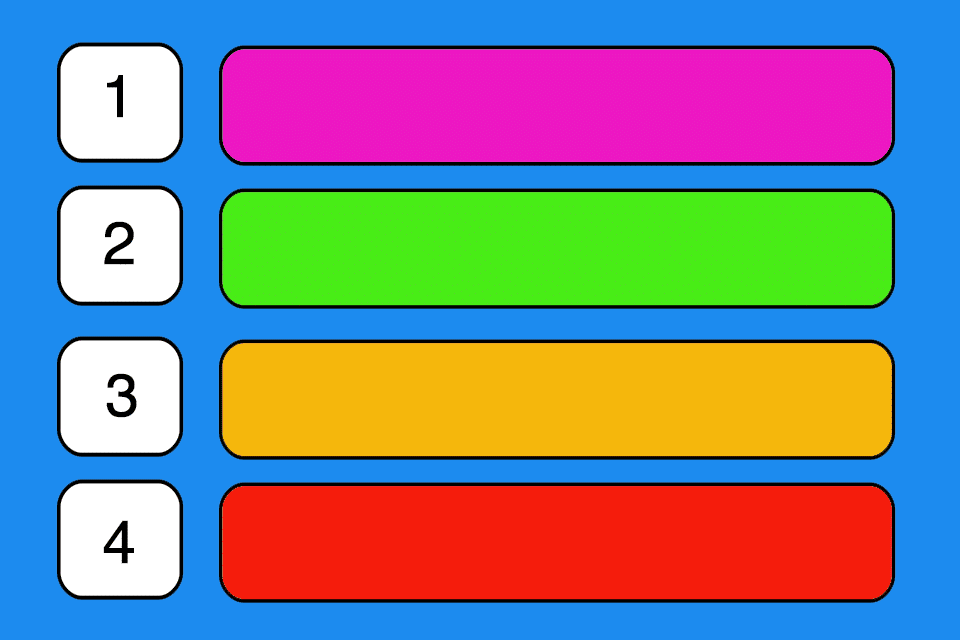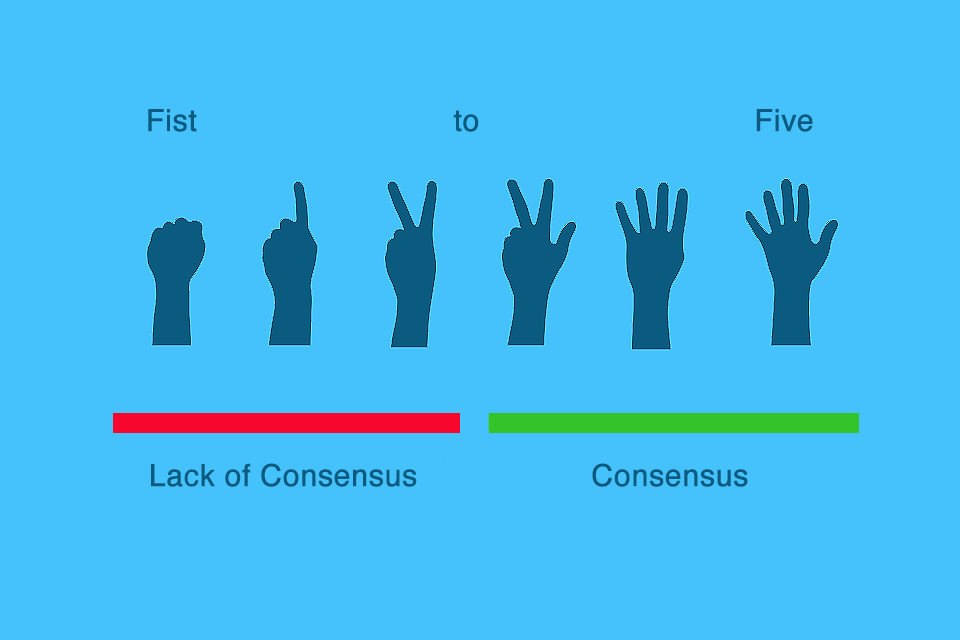What is Dot Voting?
Smartpedia: Dot voting is a participatory, visual approach in which people vote on different alternatives using dots.
Dot voting – the selection of alternatives using points
There are many methods for generating and developing ideas. There are many techniques for learning from the present for the future. And there are many practices for generating decisions. Dot scoring is an approach that can be used in many of these methods, techniques or practices.¹ It is participatory and visual. It is simple, can be applied quickly and requires almost no effort. All that is needed is an identical number of sticky dots per participant, which will decide on the order of options according to the question and the individual preferences of the participants.
Questions could be, for example:
- Which idea should we explore in detail?
- Which impediment hinders us the most and should we remove most urgently?
- Which investment should we make?
- Which epic should we tackle immediately?
- Which option should we choose?
- Which topic should we put on the agenda at our open space?
- …
In short, the dot voting approach – often referred to as point scoring – is suitable for all conceivable objects, options or measures that need to be ranked. It is suitable for small teams and large groups, is intuitive and requires no prior knowledge to use.
Alternative names for dot voting
There are at least two alternative terms for dot voting that have also found their way into everydays usage.
- Multi-voting emphasises that in voting, participants have more than one dot and could therefore vote for multiple options or ideas. It is up to the participants whether they “spread out” their dots or use them all for a dedicated option.
- Dotmocracy is a “modern” portmanteau of dots and democracy. It suggests that all participants have equal rights and that no vote counts more than another. Accordingly, there would be no Hippo effect. In theory, this should be the case, but in practice it can look different.
Criticism of dot voting
With one exception, there should be nothing to criticise about dot voting: Organisations should think about how many dots the participants receive, possibly also depending on the number of objects to be selected, as otherwise evaluations could be carelessly distorted.
Example 1: 5 participants, one dot per person, 5 selectable ideas. Danger: each idea receives exactly one dot and the prioritisation does not lead to an order.
Example 2: 5 participants, 10 dots each per person. 4 of the 5 persons distribute 2 dots to each idea, so that in total each idea receives 8 dots. The 5th person puts all 10 dots on one idea. This idea now has 18 points and “wins”. Does this mean that every opinion counts equally, or is the 5th person’s vote the one that really counts? What will the feeling be in the team?
Critically, organisations should consider selected aspects in relation to point scoring:
- Majority decisions always disadvantage minorities.
- Decisions can often be influenced, e.g. by superiors who demonstratively distribute their points first in a vote in order to encourage employees to follow suit. And of course, colleagues or friends can also contribute to distortion in this way.
- Decisions based on preferences, taste or opinion are always subjective. Perhaps other prioritisation approaches that propagate clear criteria for evaluation could deliver better results.
- Even though dot voting is intuitive and does not require any prior knowledge, knowledge of the object to be evaluated is often elementary. An idea may sound creative and a feature progressive, the effort and resource requirements arise during implementation. Ideally, apples should not be compared with oranges. In addition, dependencies often have to be taken into account in practice.
Impulse to discuss
Do you know of a simpler approach than point scoring to prioritise ideas, actions or decisions?
[1] Some publications say that dot voting is a method. Provided that a method is a way of implementation that achieves a desired goal, then dotmocracy is probably not a method at all. Sticking a glue dot on an idea on a pin board sounds a bit poor for such a classification, doesn’t it?
There are organisations that use different coloured dots to express additional aspects. There are no limits to the imagination here.
Here you can find a video about dot voting.
If you like the article or would like to discuss it, please feel free to share it in your network. And if you have any comments, please do not hesitate to send us a message.
And here you will find additional information from our Smartpedia section:



